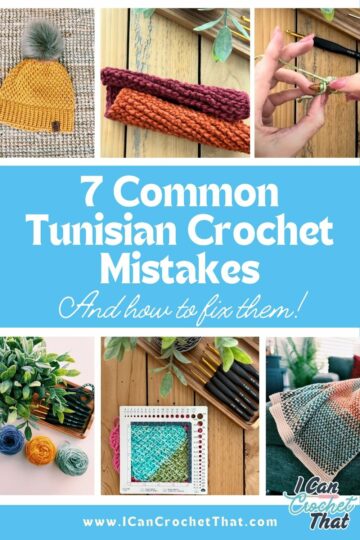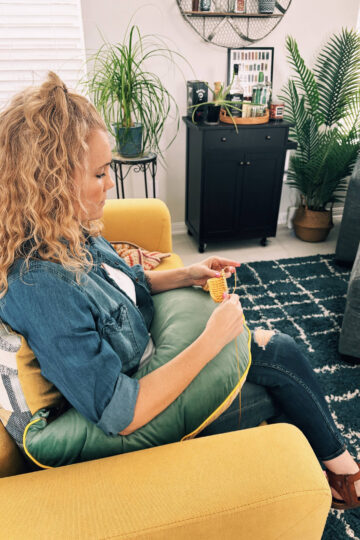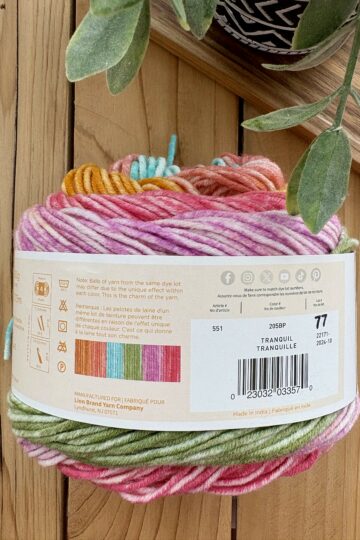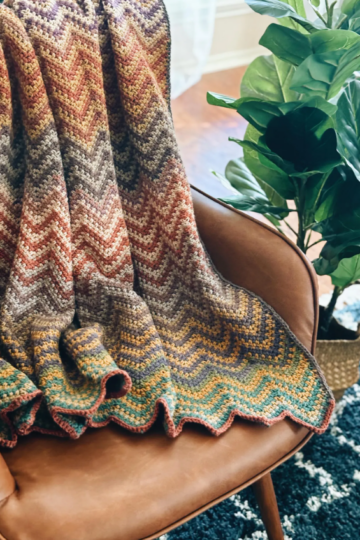Explore the world of eco-friendly crochet as we guide you through sustainable yarn choices and crochet projects that positively impact our planet. Discover how to support independent yarn companies while crafting with care for a greener world.
In a world that increasingly values sustainability and eco-conscious living, even our crafting hobbies can become a force for positive change.
Crocheting has the potential to be not just a means of self-expression but also a pathway towards a greener, more environmentally-friendly lifestyle.
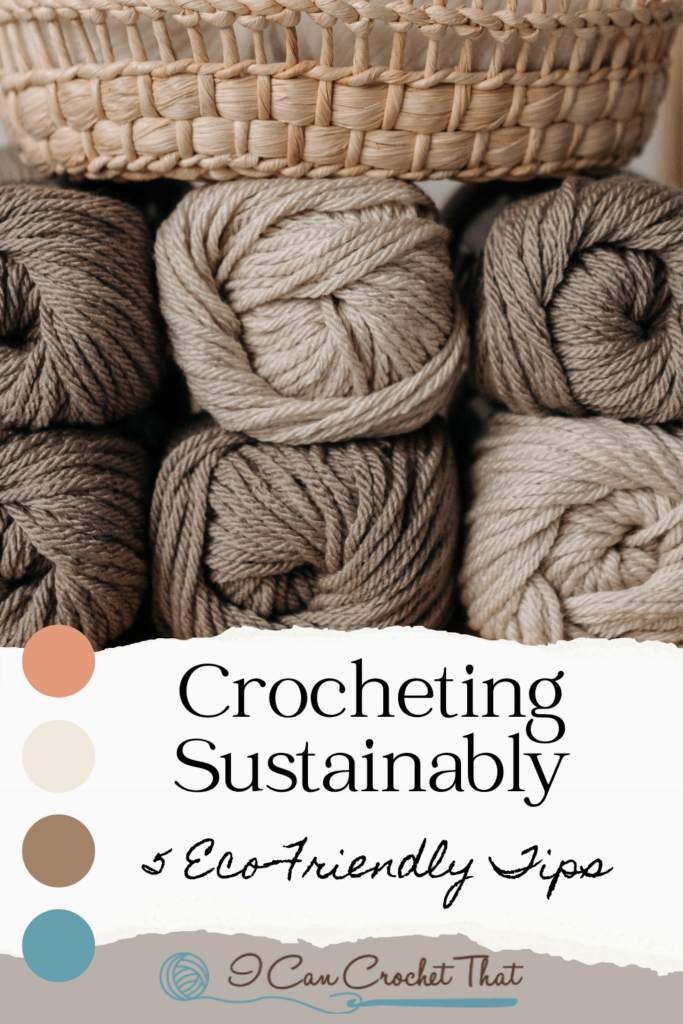
Today, we'll explore eco-friendly crocheting and how conscious choices in materials, practices, and projects can reduce our carbon footprint, minimize waste, and contribute to a more sustainable planet.
This guide will offer you insights, tips, and inspiration to make your crochet projects stunning, meaningful, and kinder to the Earth.
Let's pick up our hooks and discover how to create beautiful, eco-conscious pieces that help protect the planet we call home.
Crocheting Sustainably: Eco-Friendly Tips
1. Sustainable Yarn Choices
Opt for yarn made from natural fibers like organic cotton, bamboo, hemp, or Tencel (made from sustainable wood pulp) rather than synthetic materials like acrylic or polyester. Look for certified organic yarns or eco-friendly certifications, such as GOTS (Global Organic Textile Standard) or OEKO-TEX Standard 100.
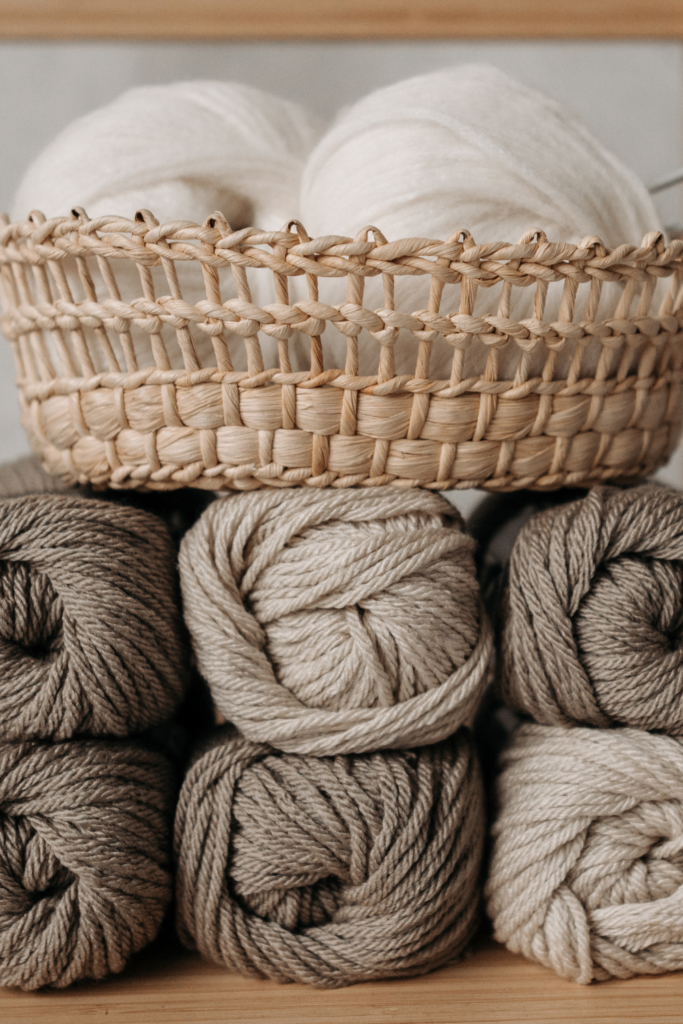
2. Recycled Yarn
Using recycled yarn for your crochet projects offers several benefits and can be a responsible and eco-conscious choice for several reasons:
Environmental Impact
One of the primary reasons to use recycled yarn is to reduce the environmental impact associated with the production of new materials.
The textile industry is known for its significant carbon footprint, water usage, and chemical pollution. By using recycled yarn, you help divert textile waste from landfills and reduce the demand for resource-intensive fibers.
Resource Conservation
The production of new textiles, especially synthetic fibers like polyester, consumes a significant amount of resources, including oil and water. Recycled yarn helps conserve these resources by reusing existing materials.
Waste Reduction
Using recycled yarn reduces textile waste. Textile waste is a major global problem, with millions of tons of textiles ending up in landfills each year. By repurposing existing materials, you contribute to waste reduction efforts.
Energy Savings
The manufacturing process for recycled yarn typically requires less energy compared to producing new yarn from raw materials. This leads to lower greenhouse gas emissions and reduced energy consumption.
Support for Circular Economy
Using recycled materials supports the concept of a circular economy, where products and materials are reused, repaired, or recycled instead of discarded after a single use.

Unique and Vintage Appeal
Recycled yarn often has a unique character and texture that can give your crochet projects a vintage or one-of-a-kind look. This can add charm and individuality to your creations.
Ethical Considerations
Some people prefer using recycled yarn because it aligns with their ethical values of sustainability, responsible consumption, and reducing harm to the environment.
Inspiration and Creativity
Working with recycled yarn can be creatively inspiring. The limitations and unique qualities of recycled materials can lead to innovative and artistic designs.
Community and Collaboration
Many makers and crafters use recycled materials to participate in yarn swaps, donations, and collaborative projects. This fosters a sense of community and contributes to shared sustainability goals.
Educational Opportunity
Using recycled yarn provides an opportunity to educate others about the importance of sustainability and responsible consumer choices.
While recycled yarn has many advantages, it's essential to be aware of its limitations, such as potential variations in color and texture and limited availability of specific types or colors.
However, these challenges can also be part of the creative process, allowing you to experiment and adapt your projects in unique ways. Using recycled yarn can be a rewarding and environmentally responsible choice for your crochet projects.
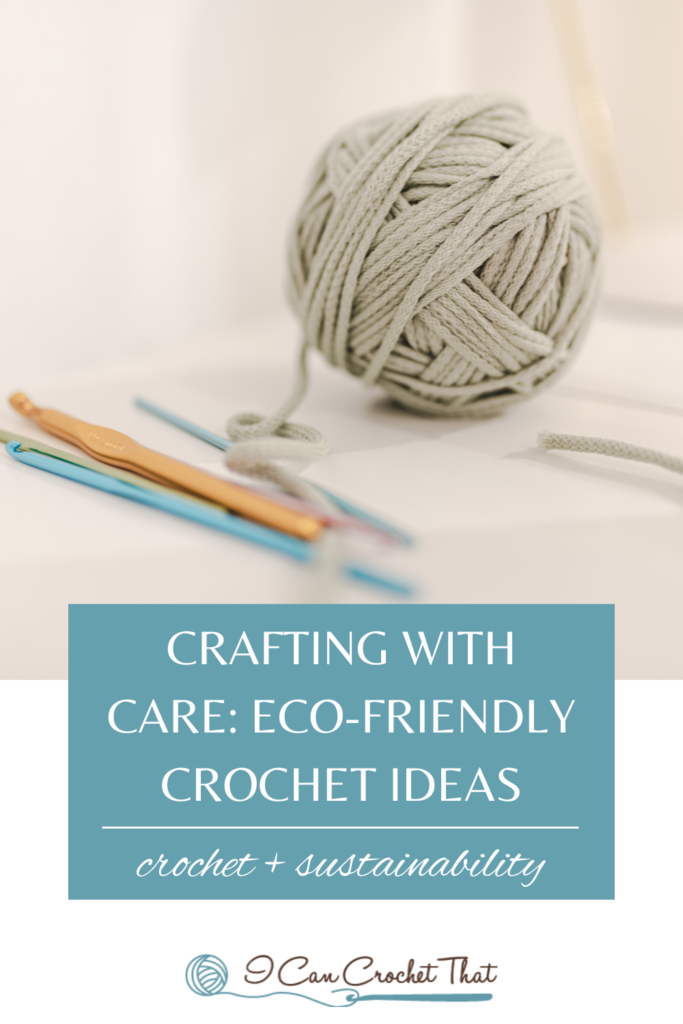
3. Local and Independent Yarn Suppliers
Supporting local and independent yarn suppliers is a wonderful way to contribute to your local community and promote small businesses. Here are some ways you can support these suppliers:
Shop Local
The most direct way to support local yarn suppliers is to buy your yarn and crochet supplies from them. Look for local yarn shops, markets, or artisans in your area. Consider making regular visits to these businesses.
Participate in Workshops and Classes
Many local yarn shops and artisans offer classes and workshops on crochet and other fiber arts. Enroll in these classes to improve your skills and directly support their educational offerings.
Attend Fiber Festivals and Events
Local fiber festivals, craft fairs, and yarn-related events often feature independent yarn suppliers and artisans. Attend these events to discover new suppliers, see unique yarn offerings, and make purchases directly from the source.
Spread the Word
Word of mouth can be a powerful way to support local businesses. Share your positive experiences with local yarn suppliers with your friends and fellow crafters. Recommend them on social media, forums, or craft-related websites.
Collaborate
Consider collaborating with local yarn suppliers on projects or events. For example, you could organize a crochet-along or charity drive using their yarn, which can mutually benefit your crochet community and the supplier.
Custom Orders
Some local artisans may be open to custom orders. If you have a specific project in mind, ask if they can create custom-dyed yarn or provide you with a unique colorway or blend.
Buy in Bulk
If you have the means and storage space, consider buying yarn in larger quantities or placing bulk orders with local suppliers. This can help them maintain a steady income, potentially leading to discounts for your purchases.
Subscribe to Clubs or Yarn Clubs
Many local yarn shops and independent dyers offer subscription clubs where you receive a regular supply of unique yarns. Subscribing to these clubs can provide ongoing support to the supplier.
Offer Feedback
Provide constructive feedback to local yarn suppliers about their products and services. This can help them improve and better meet the needs of the crafting community.
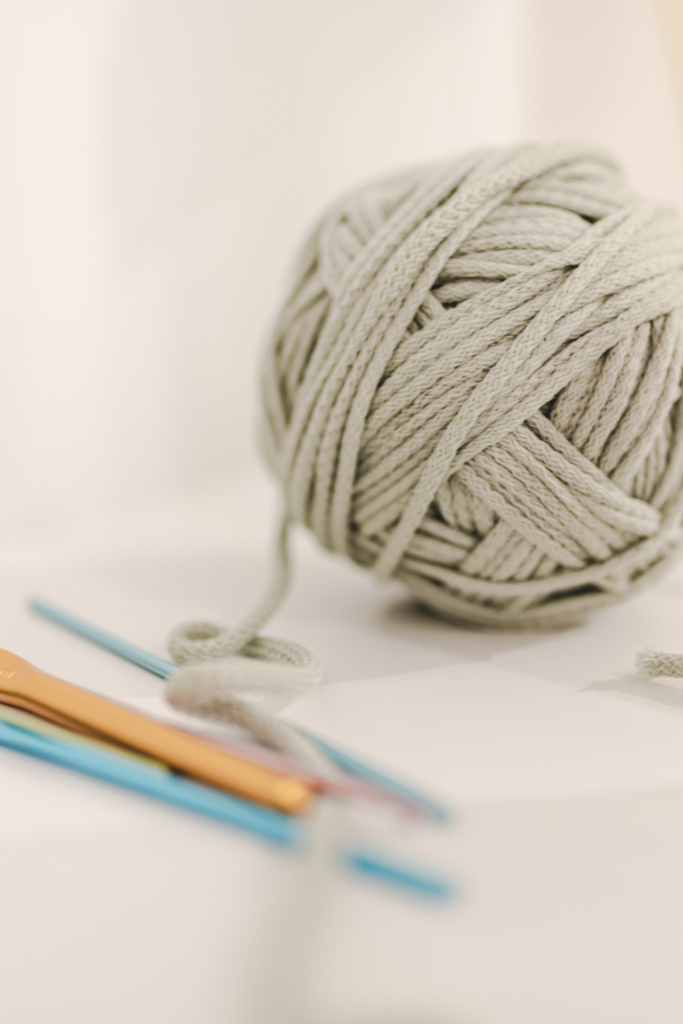
Participate in Loyalty Programs
If local yarn shops have loyalty or rewards programs, join them and take advantage of discounts or special offers.
Donate or Volunteer
Some local yarn shops may accept donations of yarn or crochet supplies for charity projects. You can also ask about volunteer opportunities or events they may need assistance with.
By actively engaging with and supporting local and independent yarn suppliers, you contribute to the sustainability of small businesses and help maintain a vibrant and diverse crafting community in your area.
Let us know which Independent Yarn Companies we should add to this list!
4. Upcycling
Upcycling old clothes for crochet is a sustainable and creative way to repurpose materials and reduce waste. Here's a step-by-step guide on how to upcycle old clothes for your crochet projects:
Gather Your Materials
Collect the old clothes you want to upcycle. Look for items made of natural fibers like cotton, linen, or wool, as these are easier to work with in crochet.
Sort and Clean
Examine your old clothes and determine which parts are suitable for upcycling. Look for areas with minimal damage, stains, or wear and tear.
Wash and clean the selected clothing items to remove any dirt or odors. Follow the care instructions on the labels.
Deconstruct the Clothing
Carefully disassemble the clothing into its individual components. For example, if you're upcycling a sweater, you can remove the sleeves, front and back panels, and even the collar if it's in good condition.
Prepare the Yarn
Cut or unravel the fabric into strips or yarn-like strands. The width and thickness of the strips will depend on your project and personal preference. You can use scissors to cut the fabric into strips or use a tool like a rotary cutter or fabric strip cutter for more even results.
Join the Strips
To create longer yarn pieces, join the fabric strips together. You can do this by sewing the ends together with a needle and thread or by using a technique like braiding or knotting to secure them.
Choose a Crochet Pattern
Decide on the crochet project you want to create with your upcycled fabric yarn. Consider patterns that work well with the thickness and texture of your yarn.
Crochet Your Project
Start crocheting your chosen project using the new yarn. Remember that fabric yarn may have a different texture and tension than traditional yarn, so practice and adjust your tension as needed.
Finishing Touches
Once you've completed your crochet project, finish it off with appropriate closures, edging, or embellishments. Weave in any loose ends securely.
Care Instructions
Be aware that upcycled fabric yarn may have different care requirements than traditional yarn. Check the care labels of the original clothing items for guidance on washing and maintaining your finished crochet projects.
Get Creative
Feel free to experiment with colors, textures, and patterns. Upcycling allows for a wide range of possibilities, and you can combine fabric yarn from different sources to create unique and colorful projects.
Share and Inspire
Share your upcycled crochet projects with others to inspire them to try upcycling and reduce textile waste.
Upcycling old clothes for crochet is environmentally friendly and adds a personal touch to your creations. It's a rewarding and sustainable way to breathe new life into clothing items that might otherwise be discarded.
Here's a cool video all about how to make a continuous strand of yarn from old clothes.
5. Crochet for a Cause
Use your crocheting skills to create items for charitable organizations or local community projects, reducing the need for mass-produced goods.
Crocheting for charity is a wonderful way to use your crafting skills to positively impact your community or the world. Here are steps to get started with crocheting for charity:
Choose a Cause
Decide which cause or charity you'd like to support through your crochet projects. There are countless organizations that accept handmade items, so consider what speaks to you. Common causes include helping the homeless, supporting children in need, providing comfort to hospital patients, or assisting animal shelters.
Read: 10 Organizations for Donating Crochet Projects
Research Local or National Organizations
Look for local or national charities or nonprofit organizations that accept crocheted items. You can start by searching online, asking at local yarn shops, or checking with community groups. Some well-known charities that often accept crocheted items include Project Linus, Warm Up America!, and Operation Gratitude.
Contact the Charity
Reach out to the charity or organization you've chosen to support. Contact them via email, phone, or their website to inquire about their specific needs, guidelines, and any restrictions on the items they accept. Ask about preferred colors, sizes, and materials.
Select a Project
Based on the charity's needs and guidelines, choose a crochet project that aligns with their requirements. Common items include blankets, scarves, hats, baby items, and pet blankets.
Gather Supplies
Acquire the necessary crochet supplies, including yarn, hooks, and any other materials or embellishments required for your chosen project.
Start Crocheting
Begin crocheting your chosen items, following the charity's size, color, and design guidelines. Consider enlisting the help of friends or fellow crocheters to increase your output.
Quality Control
Pay attention to the quality and craftsmanship of your crocheted items. Ensure that they are clean, free of loose threads, and made with care.
Label Your Items
Attach a label or tag to each item, including information about the charity or organization you're crocheting for. This can help raise awareness and ensure that your donations reach the intended recipients.
Arrange for Delivery
Coordinate with the charity to arrange for the delivery or drop-off of your crocheted items. Some charities may have specific drop-off locations or events where donations are accepted.

Document Your Donations
Keep a record of the items you've crocheted and donated and any receipts or acknowledgments from the charity. This documentation can be helpful for tax purposes.
Spread the Word
Share your charitable crochet projects on social media or within your crafting community to inspire others to get involved.
Join or Form a Group
Consider joining or forming a local crochet or crafting group dedicated to charity work. Group efforts can lead to larger donations and a stronger sense of community involvement.
Stay Informed
Stay updated on the charity's ongoing needs, and consider making crochet for charity a regular part of your crafting routine.
By incorporating these eco-friendly practices into your crocheting, you can reduce your environmental impact and create beautiful, sustainable pieces that help the environment!
READ NEXT: 15 Eco-Friendly Crochet Patterns

